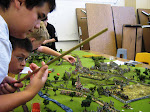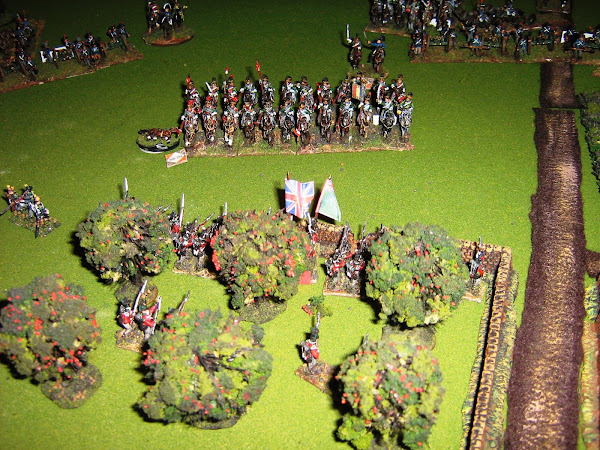Six native players were set to take on five imperial ones. The native commanders could talk to one another, but the British commanders couldn't. This proved to be a tremendous advantage.
The winner would be determined by points. These could be accumulated by destroying enemy units as well as taking key geographical objectives on the table. At one end there was a small town held by two companies of highlanders and two companies of raw militia. Adding to the defense was a section of royal artillery and one of miserable native stock. In the middle was a vital oasis defended by two companies of redcoats. And then at the extreme opposite end was the bulk of the allied force made up of four British companies, three Egyptian, two sections of royal artillery, two troops of British lancers, two troops of Egyptian cavalry and a large baggage train.
To oppose this formidable force were several groups of native warriors. Initially, this observer thought they would be hard pressed to make their way through sheets of disciplined fire to come to grips with their enemies, but this proved not to be the case.
 |
| The town, awaiting the assault |
 |
| The powerful relief column |
 |
| The two companies trying to defend the oasis are overwhelmed by native cavalry. |



This comment has been removed by the author.
ReplyDelete